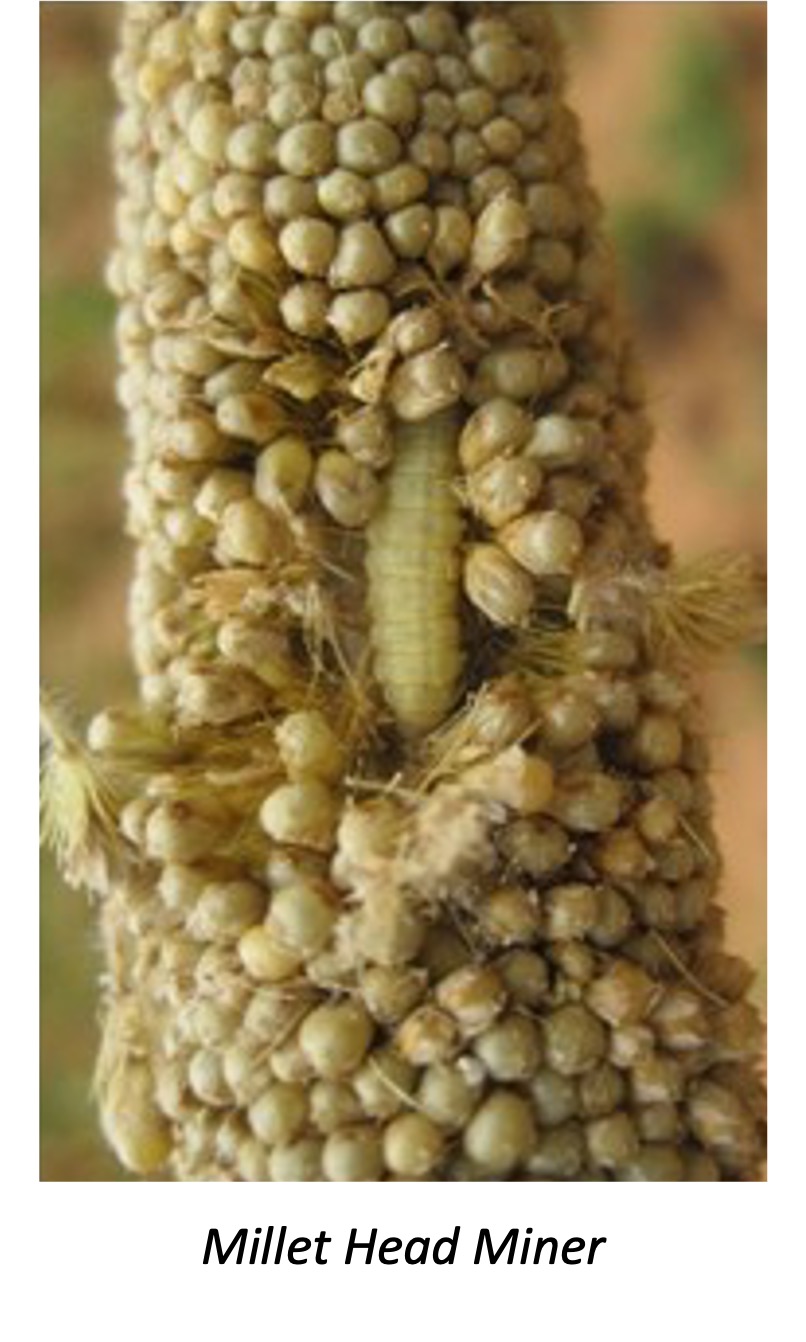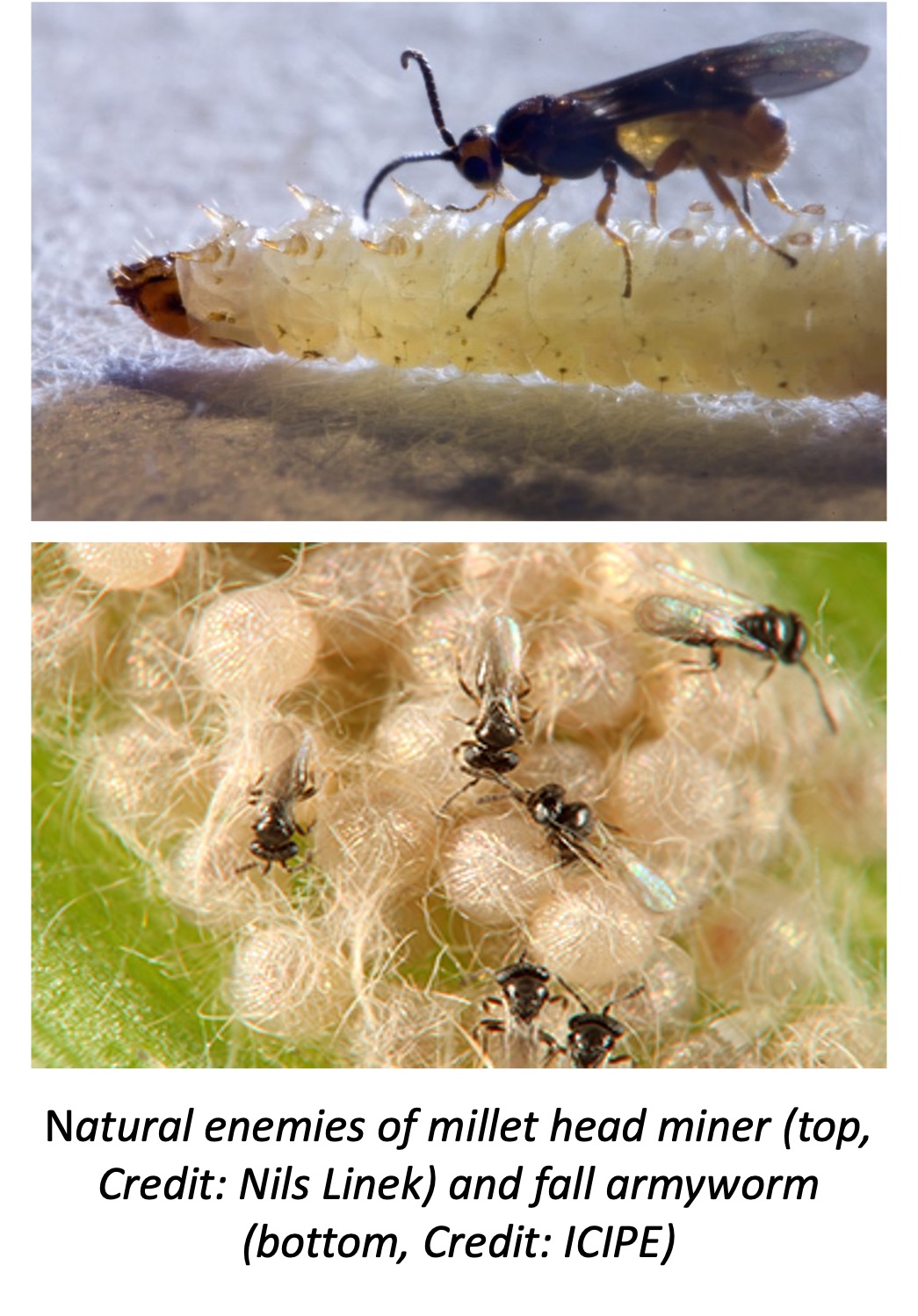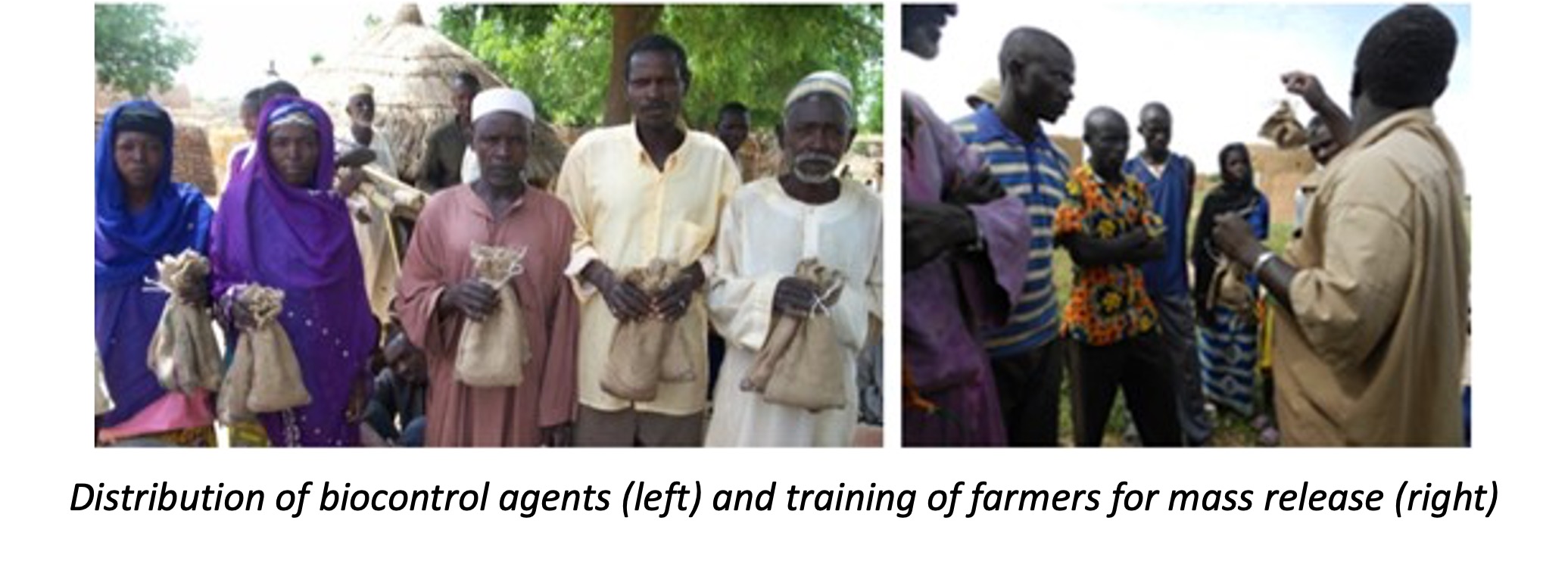Biological Control of Insect Pests with Natural Enemies
Summary
The millet head miner is the most important insect pest of pearl millet in the Sahel. These moths deposit their eggs on the heads of millet and hatched caterpillars mine into the seeds of the millet head. It can cause complete crop loss but more often losses occur in the range of 40% to 80%. Without control measures, the population of millet head miner accumulates over time, leading to food scarcity even during years of better rainfall. Young caterpillars are light yellowish and become reddish as they grow. Later the caterpillar drops to the ground and burrows into the soil to pupate and emerge as adults. Early planted crops or early maturing millet varieties are more prone to severe infestation. The Fall Armyworm is an invasive moth species spreading across Sub-Saharan Africa since 2016. It attacks sorghum and other crops, consuming leaves and causing yield loss of 50% or more. Adult moths can fly large distances and infest farmlands. Natural enemies offer lasting protection against the pests.
About the Solution
Biological control strategies for Millet Head Miner and Fall Armyworm are based upon natural mechanisms. It involves indigenous enemies and predators of the pest and releasing these in the field to prevent outbreaks and severe crop damage. The principle is maintaining an active population of beneficial predatory and parasitic organisms through informed stewardship. In addition, when the population of natural enemies becomes too low it may be increased through simple rearing techniques and augmentative release. Biological control of the Millet Head Miner is accomplished using the parasitoid wasp Habrobracon hebetor, which attacks the caterpillar. Recent work in Africa shows that the parasitoid wasp Telenomus remus is a promising biocontrol organism to prevent outbreaks of the Fall Armyworm as it parasitizes eggs of the pest. The acceptance and skillfulness of farmers are key for using natural enemies in millet and sorghum production systems. Farmer Field Schools train stakeholders on identification and surveillance of insect pests and their natural enemies as well as on rearing and release techniques of the parasitoids. Biological control techniques can readily be combined with other practices of Integrated Pest Management.
The principles of biocontrol strategies against the Millet Head Miner and Fall Armyworm are applicable in all millet and sorghum growing areas of Sub-Saharan Africa, ranging from semi-arid (dry) to sub-humid climates. Augmentative releases however must align with the physiological traits of natural enemies and the native communities of beneficial organisms. In semi-arid regions, parasitoid wasp populations may fall to critically low numbers during the dry season because of a shortage of hosts and benefit from release each year. Another limitation of the biocontrol technology is its incompatibility with spraying of pesticides. This is especially the case when chemicals are applied early in the season, as they negatively affect biocontrol agents.
Releases of beneficial organisms can be performed in two ways; ‘inoculative’ where a limited number are introduced and populations build over time, or ‘inundative’ where mass rearing takes place and large numbers are dispersed. The inoculative technique is suitable for long-term intervention, whereas the inundative technique immediately results in suppression of pests. Reproduction and survival of natural predators and enemies can be enhanced by providing alternative hosts or favorable nesting and feeding sites.
Implementing biological control starts when critical thresholds of harmful and beneficial populations are exceeded. Monitoring may be performed with simple tools such as traps and magnifying glasses, or with advanced high-resolution cameras fitted onto drones that allow rapid surveillance of large areas. Mass rearing of H. hebetor or T. remus is possible in laboratories or on-farm using an easy and low-cost technique. This involves a jute bag that is filled with 50 g of millet grains, 30 g of millet grain flour, and 25 larvae of the rice moth, and two mated females of the parasitoid wasp. It takes about 8 days for biocontrol agents to reach adult stage, and on average 70 parasitoids are produced from one jute bag in 10 days’ time. For release, three jute bags containing the parasitoids are placed in the field with one bag in the middle and the others at both ends at the beginning of the heading stage of millet. Rearing T. remus is done by collection of sorghum leaves that are infested by fall armyworm eggs and exposing to a mated female wasp in plastic flasks for 2 days using a ratio of 20 eggs to 1 wasp. The female T. remus produces approximately 200 adults. Release of T. remus on farms is conducted from the windward side of the field.
Commercialization
Commercially available
Solution Images
Institutions




